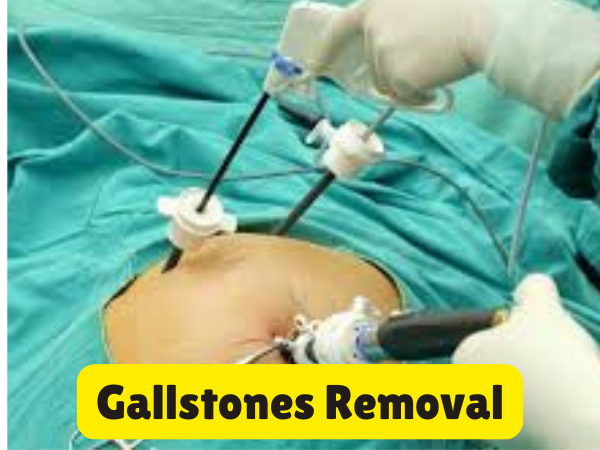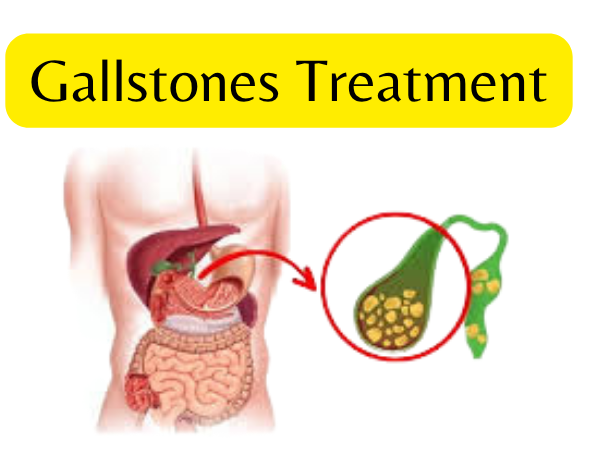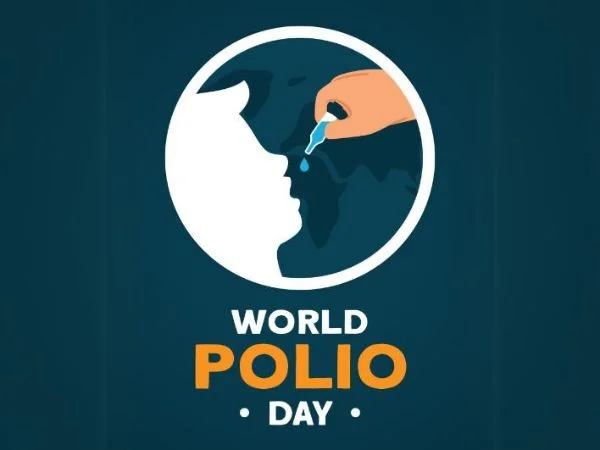You’re reading this, so chances are you’re already aware of gallstones. You’ve read blog articles, read online health communities, and even visited a physician to inquire about treatment. Yet you keep looking. Why? Because most of what’s available on the internet parrots the same — generic, outdated, and not really providing genuine decision-making information. In 2025, it’s not enough to ask what are gallstones treatments — you need to know what works, what’s safe, and what costs you money for your body. This manual gives you a science-based, no-bones-about-it take on gallstones treatment options, so you can decide yourself what is best for your body.

What’s New in 2025 – Gallstones Treatment Options
Treatment of gallstones has become far more sophisticated. No longer are patients handed a simple choice of doing nothing at all or having an operation. Physicians instead take a multi-staged approach based on the size, type, and symptoms of your gallstones.

Let us talk about the top three Gallstones Treatment Options for 2025:
1. Laparoscopic Cholecystectomy (Keyhole Surgery)
- The gold standard.
- 3–4 small incisions performed by using minimal invasive techniques.
- Removes the gallbladder completely, along with the location where stone forms.
2. Oral Bile Acid Therapy (Ursodeoxycholic Acid – UDCA)
- Given to patients who are unable to undergo gallbladder surgery.
- Works by dissolving cholesterol stones.
- Response time of months.
3. Shock Wave Lithotripsy (SWL)
- A non-surgical treatment option available for a very select group of patients: patients with only a few non-calcified stones.
- High-frequency sound waves are used to smash stones into pieces.
A 2024 Journal of Gastrointestinal Surgery article had reviewed over 2,000 cases and identified laparoscopic cholecystectomy successful in 97% of the cases, with less than 1.7% risk of complications, and recovery time of 7–10 days. This further establishes it as the treatment of choice for most symptomatic gallstones. With diagnostic procedures like contrast-enhanced ultrasound and MRCP imaging becoming popular in 2025, individual-based treatment planning is no longer the norm—instead, the norm.
Is Gallstones Treatment Options Without Surgery Really Effective?
Huge numbers of patients are treated non-surgically for gallstones either because they fear surgery or because they cannot medically survive surgery. Thankfully, improving non-surgical methods are now more reliable than ever. The most commonly used non-surgical therapy is Ursodeoxycholic Acid (UDCA). It has good results in dissolving cholesterol stones when:
- Stones are smaller than 1 cm in diameter.
- The gallbladder is normal.
- There are no infection symptoms here or inflammation.
A large 2023 meta-analysis in The Lancet mentioned that 45% of patients with small cholesterol stones completely dissolved in just 6 months on 600 mg/day of UDCA.
Wait, there’s a catch:
- It takes 6–24 months to develop full results, depending on the size of the stone and bile composition.
- Recurrent stones: Recurrent stones occur in 40–60% of patients if diet isn’t normalized.
- Cholesterol stones alone dissolve: Pigment stones or hardened gallstones don’t dissolve.
Thus, Gallstones Treatment Options without surgery is available but selective, time-consuming, and requires close medical observation, often by serial ultrasound check every 3–6 months to monitor for improvement.
What Are 3 Gallstone Treatments? – A Simplified Comparison
When people ask, what are 3 gallstone treatments?, they’re typically seeking a summary of their options in one place. Here’s a plain-English comparison by treatment method, patient population, and results:
| Treatment Option | Ideal Candidate | Treatment Duration | Stone-Free Rate |
|---|---|---|---|
| Laparoscopic Surgery | Moderate-to-severe symptoms, large/multiple stones | 7–10 days recovery | 95%+ |
| Oral UDCA Therapy | Small, cholesterol stones, mild symptoms | 6–24 months | 45–60% |
| Shock Wave Lithotripsy | Few non-calcified stones, no inflammation | 1–2 sessions + meds | 50–70% |
A 2024 AIIMS Delhi study followed 600 gallstone patients for 1 year. Laparoscopic surgery patients had virtually zero recurrence, and 48% of the non-operatively treated patients required surgery subsequently as their symptoms progressed. Knowing what are 3 gallstone treatments other than medical comparison sets realistic expectations on what to anticipate.
What Dissolves Gallbladder Stones Quickly? – Science vs. Social Media
If you’ve come across videos promising that apple juice, lemon water, or olive oil “flushes” can remove gallstones overnight, pause. Let’s be clear: no food, herb, or home remedy can dissolve gallstones fast.
So what dissolves gallbladder stones fast?
- Only Ursodeoxycholic Acid (UDCA) has clinical backing for dissolving stones — and even that takes months.
- A 2023 research article in the International Hepatology Journal revealed that:
- Patients receiving UDCA 600 mg/day had up to 35–40% decrease in stone at 12 weeks, particularly with concomitant low-fat, high-fiber diet and sufficient fluid.
- Other practical measures to facilitate the process:
- Avoid fried and high-fat foods to prevent over-saturation of the bile, however.
- Increase water up to 2.5+ liters a day.
- Maintain medicines and follow-up imaging.
If you truly wish to get what dissolves gallbladder stones fast, skip the “flush kits” and consult a gastroenterologist for tailored treatment based on your stone.
Surgery vs. Natural – How to Make a Smart Decision
Either surgery or non-surgery must be rationally decided, and not emotionally. It must be based on clinical presentation, risk factors, and prognosis.
Surgery Is Usually Best When:
- You have frequent or severe pain (biliary colic).
- Stones are larger than 2 cm, or multiple.
- There are signs of infection or inflammation (fever, vomiting, jaundice).
- Imaging shows thickened gallbladder walls or impaired function.
Gallstones Treatment without Surgery Routes Work If:
- Stones are asymptomatic, small (<1 cm), and not calcified.
- You have medical contraindications for surgery (heart/lung disease, pregnancy).
- You’re committed to regular monitoring and willing to accept the slower pace of treatment.
A Harvard Health Review in 2024 indicated that nearly 70% of initially good candidates for nonoperative management ultimately needed surgery within 3–5 years of follow-up due to complication or recurrence.
The approach? Talk over your profile with a hepatobiliary expert and map out an action stepwise. In 2025, watchful waiting, drugs, and lesser inoperative surgery are all part of an individualized treatment spectrum.
What Doctors Say: 2025 Best Practices
Educated patients make educated decisions. The aim is not just clearance of stone — it is bile and liver well-being in the long term. We treat every case based on recurrence risk, rather than temporary symptoms,” says Dr. Kavita Singh, Hepatobiliary Surgeon, AIIMS New Delhi, at the 2025 Global HepatoCare Conference.
Doctors today are focused on preservation of function — not just removal of the gallbladder, but optimal post-operative quality of life, intestinal balance, and no recurrence.
FAQs
What is the safest gallbladder removal procedure?
Laparoscopic cholecystectomy is safest. Single-incision, less-scarring, and faster recovery techniques are employed in most hospitals in 2025.
What is the best treatment for gallstones?
Surgery has the best long-term outcome. Not only is the stone eliminated, but also the gallbladder, the organ that forms stones, is eliminated.
What is the best surgery to get gallstones taken out?
The newest and most effective way is Single-Incision Laparoscopic Surgery (SILS). The recovery time is shorter, and cosmetic outcome is better than the old-fashioned laparoscopy.
What is the best way to get gallstones taken out?
If symptomatic: operation. If asymptomatic but at high risk for operation: attempt UDCA, but under a doctor’s supervision with long-term monitoring.
Last Takeaways
Gallstones Treatment Options in 2025 has both non-surgical and surgical options. The best is determined by your symptoms, stone type, and medical history. Surgery-free gallstones treatment is only effective in some patients and needs time, self-control, and continuous checking. If you’re still asking what are 3 treatments for gallstones, remember: surgical removal, oral bile acid therapy, and lithotripsy all exist — but only one may be right for you. Worried about what breaks gallbladder stones quickly? Only UDCA, and even that is not overnight. Opt for evidence, not web myths.


